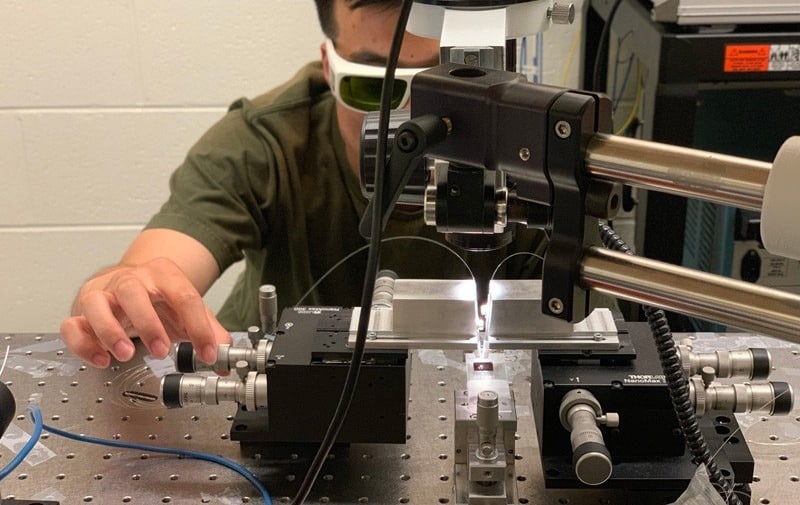 Research & Discovery
Research & Discovery
A Blog Devoted to UD Innovation, Excellence and Scholarship
Research & Discovery
A Blog Devoted to UD Innovation, Excellence and Scholarship
Compute at the speed of light
ABOVE: UD doctoral student Zi Wang works in an optics laboratory in Evans Hall. | Photos courtesy of Tingyi Gu and Zi Wang
UD research team develops new way to make integrated photonics
At the University of Delaware, a research team led by Tingyi Gu, assistant professor of electrical and computer engineering, has designed an integrated photonics platform with a one-dimensional metalens — a thin lens that can be designed at the nanoscale to focus light in a specific way — and metasurfaces — tiny surfaces made with nanostructures to manipulate the transmitted or reflected light– that limit the loss of information. The team recently described their device in the journal Nature Communications.
“It’s a new way to achieve integrated photonics compared to the conventional way,” said doctoral student Zi Wang, the first author of the paper.
The team fabricated a tiny metalens on a silicon-based chip programmed with hundreds of tiny air slots, enabling parallel optical signal processing all within the tiny chip. They demonstrated high signal transmission with less than one decibel loss over a 200-nanometer bandwidth. When they layered three of their metasurfaces together, they demonstrated functionalities of Fourier transformation and differentiation — important techniques in the physical sciences that break down functions into constituent parts.
“This is the first paper to use low-loss metasurfaces on the integrated photonics platform,” said Gu. “Our structure is broadband and low loss, which is critical for energy efficient optical communications.”
What’s more, the new device developed at UD is much smaller and lighter than conventional devices of its type. It doesn’t require the manual alignment of lenses, so it is more robust and scalable compared to the traditional free-space optics platforms, which require tremendous patience and time to set up.
This new device could have applications in imaging, sensing and quantum information processing, such as on-chip transformation optics, mathematical operations and spectrometers. With more development, this technology could also be useful in deep learning and neural network applications in computing.





